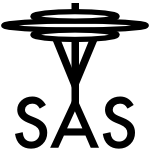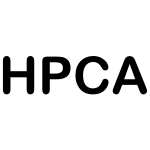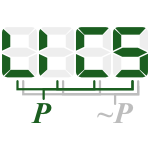24 papers:
 RecSys-2015-AuteriT #linear #personalisation
RecSys-2015-AuteriT #linear #personalisation- Personalized Catch-up & DVR: VOD or Linear, That is the Question (PA, RT), p. 227.
 DAC-2014-LinKH #mobile #power management
DAC-2014-LinKH #mobile #power management- Catch Your Attention: Quality-retaining Power Saving on Mobile OLED Displays (CHL, CKK, PCH), p. 6.
 CHI-2014-HakkilaPSAGS #3d #exclamation #interactive #mobile
CHI-2014-HakkilaPSAGS #3d #exclamation #interactive #mobile- Let me catch this!: experiencing interactive 3D cinema through collecting content with a mobile phone (JH, MP, SS, FA, KG, AS), pp. 1011–1020.
 KDD-2014-JiangCBFY #behaviour #graph #named #scalability
KDD-2014-JiangCBFY #behaviour #graph #named #scalability- CatchSync: catching synchronized behavior in large directed graphs (MJ, PC, AB, CF, SY), pp. 941–950.
 ICEIS-v2-2013-CuzzocreaF #analysis #comparative #exclamation #metamodelling #power of #state of the art
ICEIS-v2-2013-CuzzocreaF #analysis #comparative #exclamation #metamodelling #power of #state of the art- Comparative Analysis of State-of-the-Art Spatial Data Warehouse Meta-models — Catching the Expressive Power of SDW Schemas! (AC, RdNF), pp. 302–309.
 RecSys-2013-XuBATMK #recommendation
RecSys-2013-XuBATMK #recommendation- Catch-up TV recommendations: show old favourites and find new ones (MX, SB, SA, ST, AM, IK), pp. 285–294.
 STOC-2012-Coja-OghlanP #satisfiability
STOC-2012-Coja-OghlanP #satisfiability- Catching the k-NAESAT threshold (ACO, KP), pp. 899–908.
 OOPSLA-2011-JovicAH #debugging #detection #performance
OOPSLA-2011-JovicAH #debugging #detection #performance- Catch me if you can: performance bug detection in the wild (MJ, AA, MH), pp. 155–170.
 ICLP-J-2010-OetschPT #debugging #source code
ICLP-J-2010-OetschPT #debugging #source code- Catching the Ouroboros: On debugging non-ground answer-set programs (JO, JP, HT), pp. 513–529.
 STOC-2009-MontenegroT #how #question
STOC-2009-MontenegroT #how #question- How long does it take to catch a wild kangaroo? (RM, PT), pp. 553–560.
 KDD-2009-GuptaBR #learning
KDD-2009-GuptaBR #learning- Catching the drift: learning broad matches from clickthrough data (SG, MB, MR), pp. 1165–1174.
 DATE-2008-KleanthousS #detection #named
DATE-2008-KleanthousS #detection #named- CATCH: A Mechanism for Dynamically Detecting Cache-Content-Duplication and its Application to Instruction Caches (MK, YS), pp. 1426–1431.
 IFL-2008-TellerSV #fault #lightweight #ml #performance #polymorphism #type safety
IFL-2008-TellerSV #fault #lightweight #ml #performance #polymorphism #type safety- Catch Me If You Can — Looking for Type-Safe, Hierarchical, Lightweight, Polymorphic and Efficient Error Management in OCaml (DT, AS, TV), pp. 249–271.
 HCI-MIE-2007-ReiterJ #quality #requirements
HCI-MIE-2007-ReiterJ #quality #requirements- Watch, Press, and Catch — Impact of Divided Attention on Requirements of Audiovisual Quality (UR, SJP), pp. 943–952.
 SAS-2006-HuangCS #debugging #identification
SAS-2006-HuangCS #debugging #identification- Catching and Identifying Bugs in Register Allocation (YH, BRC, MLS), pp. 281–300.
 SIGAda-2006-MarkowRB
SIGAda-2006-MarkowRB- Catch that speeding turtle: latching onto fun graphics in CS1 (TM, EKR, JRSB), pp. 29–34.
 VLDB-2005-PeiJET #approach #semantics
VLDB-2005-PeiJET #approach #semantics- Catching the Best Views of Skyline: A Semantic Approach Based on Decisive Subspaces (JP, WJ, ME, YT), pp. 253–264.
 ICSE-2005-HenkelD #api #evolution #exclamation #game studies #refactoring
ICSE-2005-HenkelD #api #evolution #exclamation #game studies #refactoring- CatchUp!: capturing and replaying refactorings to support API evolution (JH, AD), pp. 274–283.
 PEPM-2003-AllenH #exception #java #slicing #source code
PEPM-2003-AllenH #exception #java #slicing #source code- Slicing java programs that throw and catch exceptions (MA, SH), pp. 44–54.
 HPCA-2003-NarayanasamySSCV
HPCA-2003-NarayanasamySSCV- Catching Accurate Profiles in Hardwar (SN, TS, SS, BC, GV), pp. 269–280.
 SIGMOD-1998-FernandezFKLS #case study #experience
SIGMOD-1998-FernandezFKLS #case study #experience- Catching the Boat with Strudel: Experiences with a Web-Site Management System (MFF, DF, JK, AYL, DS), pp. 414–425.
 LICS-1992-Nakano #formal method
LICS-1992-Nakano #formal method- A Constructive Formalization of the Catch and Throw Mechanism (HN), pp. 82–89.
 ICSE-1990-Kozaczynski #re-engineering
ICSE-1990-Kozaczynski #re-engineering- The “Catch 22” of Re-engineering (WK), p. 119.
 DAC-1979-Giuliani #design #tool support
DAC-1979-Giuliani #design #tool support- Will Disign tools catch up to VLSI design (DG), pp. 544–545.
 RecSys-2015-AuteriT #linear #personalisation
RecSys-2015-AuteriT #linear #personalisation DAC-2014-LinKH #mobile #power management
DAC-2014-LinKH #mobile #power management CHI-2014-HakkilaPSAGS #3d #exclamation #interactive #mobile
CHI-2014-HakkilaPSAGS #3d #exclamation #interactive #mobile KDD-2014-JiangCBFY #behaviour #graph #named #scalability
KDD-2014-JiangCBFY #behaviour #graph #named #scalability ICEIS-v2-2013-CuzzocreaF #analysis #comparative #exclamation #metamodelling #power of #state of the art
ICEIS-v2-2013-CuzzocreaF #analysis #comparative #exclamation #metamodelling #power of #state of the art RecSys-2013-XuBATMK #recommendation
RecSys-2013-XuBATMK #recommendation STOC-2012-Coja-OghlanP #satisfiability
STOC-2012-Coja-OghlanP #satisfiability OOPSLA-2011-JovicAH #debugging #detection #performance
OOPSLA-2011-JovicAH #debugging #detection #performance ICLP-J-2010-OetschPT #debugging #source code
ICLP-J-2010-OetschPT #debugging #source code STOC-2009-MontenegroT #how #question
STOC-2009-MontenegroT #how #question KDD-2009-GuptaBR #learning
KDD-2009-GuptaBR #learning DATE-2008-KleanthousS #detection #named
DATE-2008-KleanthousS #detection #named IFL-2008-TellerSV #fault #lightweight #ml #performance #polymorphism #type safety
IFL-2008-TellerSV #fault #lightweight #ml #performance #polymorphism #type safety HCI-MIE-2007-ReiterJ #quality #requirements
HCI-MIE-2007-ReiterJ #quality #requirements SAS-2006-HuangCS #debugging #identification
SAS-2006-HuangCS #debugging #identification SIGAda-2006-MarkowRB
SIGAda-2006-MarkowRB VLDB-2005-PeiJET #approach #semantics
VLDB-2005-PeiJET #approach #semantics ICSE-2005-HenkelD #api #evolution #exclamation #game studies #refactoring
ICSE-2005-HenkelD #api #evolution #exclamation #game studies #refactoring PEPM-2003-AllenH #exception #java #slicing #source code
PEPM-2003-AllenH #exception #java #slicing #source code HPCA-2003-NarayanasamySSCV
HPCA-2003-NarayanasamySSCV SIGMOD-1998-FernandezFKLS #case study #experience
SIGMOD-1998-FernandezFKLS #case study #experience LICS-1992-Nakano #formal method
LICS-1992-Nakano #formal method ICSE-1990-Kozaczynski #re-engineering
ICSE-1990-Kozaczynski #re-engineering DAC-1979-Giuliani #design #tool support
DAC-1979-Giuliani #design #tool support









